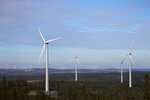Land of the Rising Sun and Offshore Wind
In this report, we analyse the financial and economic viability of new and existing coal power investments in Japan. In doing so, it aims to shine a spotlight on the risks associated with investing and operating coal power in Japan.
Japan’s policymaking is gradually becoming more ambitious with regards to climate change, despite still investing in and supporting coal power.
- The recent Strategic Energy Plan (SEP) stated for the first time in the history of Japan’s energy policy that renewables should become the main source of power and efforts should be made to decarbonise the energy sector by 2050.
- The Long-term Strategy for Decarbonisation (LTSD), which was approved by the cabinet and submitted to the UNFCCC in June 2019, states: “The Government will work to reduce CO2 emissions from thermal power generation to realise a decarbonised society and consistent with the long-term goals set out in the Paris Agreement.”
Despite these policy signals, Japan is still investing heavily in coal power. The nation currently has over 11 GW of under-construction, permitted or pre-permitted coal capacity as of September 20, 2019. This capacity could have an overnight capital cost of US$29bn and would need to be closed prematurely to remain consistent with the temperature goal in the Paris Agreement. Regardless of the Paris Agreement, there is a growing expectation that coal will face fierce competition from renewable energy in the future, calling into question not only new investment decisions but the long-term viability of the operating fleet.
Carbon Tracker has developed a project finance model for every planned and under-construction coal unit in Japan. The purpose of these models is to illustrate how, under different scenarios, a coal project could become unviable over its lifetime. In the absence of publicly available information, we developed a breakeven scenario analysis to understand how key variables, such as electricity tariff, coal price or capacity factor, could compromise project viability.
New renewables cheaper than new coal by 2022 and existing coal by 2025
There are three economic inflections points which will make coal economically obsolete relative to renewable energy:
- When new renewable energy outcompetes new or under-construction coal;
- When new renewable energy outcompetes existing coal; and
- When new firm (or dispatchable) renewable energy outcompetes existing coal (out of the scope at this stage).
![]()
![]()
Source: Carbon Tracker analysis
Without policy reform, the Japanese consumer could pay for US$71bn of stranded coal assets through higher power prices
Our analysis shows that building coal power today equals high-cost power and fiscal liabilities tomorrow. Japan’s planned and operating coal capacity is partially protected by regulations that give coal generators an unfair advantage in the marketplace.
These regulations are sheltering high-cost coal from significant cost declines in renewable energy. Without policy reform, the Japanese consumer may not be receiving the lowest-cost power possible. In our below 2°C scenario, where planned, under-construction and operating coal capacity is forced to shut down in a manner consistent with the temperature goal in the Paris Agreement, stranded asset risk from capital investments and reduced operating cashflows could amount to US$71bn.[1]
The following diagram illustrates how stranded coal assets could materialise in the Japanese economy:
![]()
[1] This scenario is consistent with government’s ambition to reduce CO2 emissions from thermal power generation consistent with the Paris Agreement.
This report was written in collaboration with the Institute for Future Initiatives at The University of Tokyo and CDP.
- Source:
- Carbon Tracker
- Author:
- Press Office
- Link:
- www.carbontracker.org/...
- Keywords:
- Japan, renewable energy, solar, wind, offshore, coal, investment, cheaper, power plant, CO2, climate goal

























